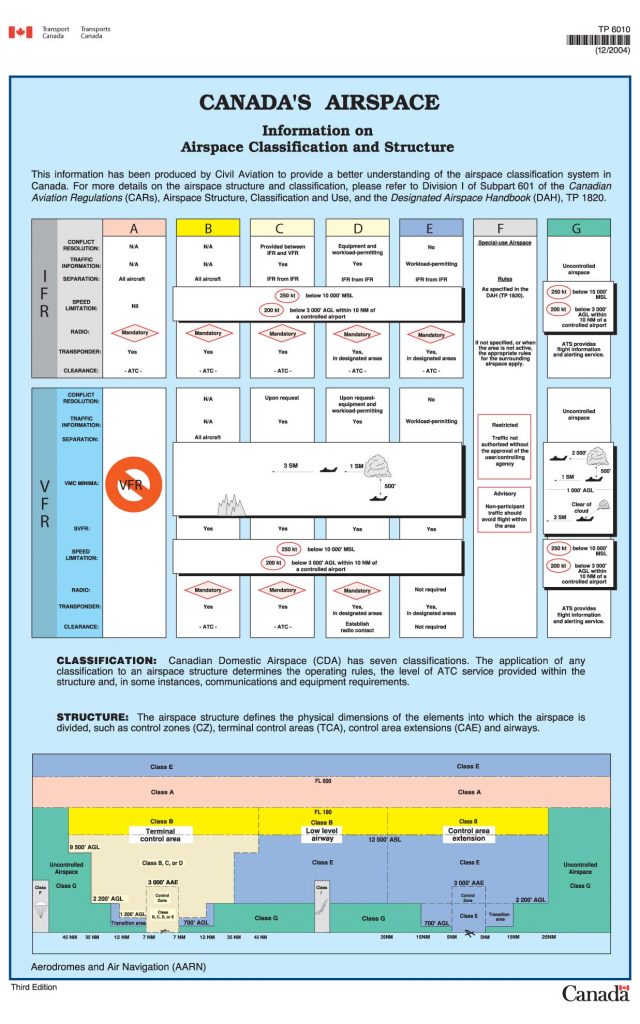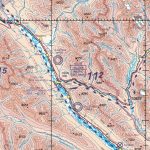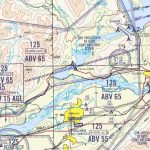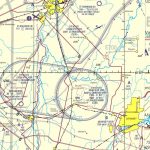Canadian Airspace Explained
As soon as your feet leave the ground in a paraglider or hang glider, you will be in airspace of one kind or another, as defined by Transport Canada.
Much of the time, especially low down, you will be in relatively worry free uncontrolled airspace, but as soon as you start leaving your local site, and potentially even at your local site, you could be encountering controlled airspace.

Canadian domestic airspace is either controlled or uncontrolled.
All the superimposed circles, corridors and other shapes in the illustration above represent various kinds of controlled airspace in Canada. Uncontrolled airspace is not depicted on maps, but that does not mean there are no regulations governing its use.
Controlled Airspace
Controlled airspace will be classified as Class A, B, C, D or E airspace. It is the airspace within which all aircraft may be subject to air traffic control and there may be licensing and equipment requirements to fly in it. All uncontrolled airspace is Class G airspace.
What about Class F? Some small pieces of airspace are designated as Class F or “Special Use Airspace”, and it can consist of uncontrolled airspace and/or controlled airspace. This means that you may have explicit access to some Class F airspace, but are absolutely prohibited to enter other Class F airspace.
For example, the air above mining (blasting) operations or near or above correctional institutions can be designated as class F “prohibited” airspace and is totally off limits for us. Another piece of airspace can be designated as Class F “Advisory” airspace and is set aside specifically for the purpose of hang gliding and paragliding.
To figure out what applies to the airspace near you, you will need to study the visual navigation chart (VNC) of your area or … ask the local pilots or an instructor!
Examples of VNC snapshots of a few popular flying sites:
Golden, BC Chilliwack, BC Mont Yamaska, QC
Uncontrolled Airspace:
Uncontrolled or Class G airspace is airspace where a hang glider or paraglider pilot can fly without having written the HAGAR examination (see below). Class G airspace is not specifically shown on aviation charts. Any airspace not specifically identified as controlled airspace on a chart, is Class G airspace.
Much of Class G airspace in Canada exists directly below controlled airspace. Class G airspace would exist from the ground up to a specific altitude, say 2200 feet above the ground, where the airspace then changes to controlled airspace such as Class C, D, etc. airspace. This means that different regulations apply at different altitudes. Your booming thermal could get you in trouble if you are unaware of this!
Even though there are no restrictions to flying hang gliders or paragliders in Class G airspace, all the CARs that are not airspace-specific are still applicable. For example, even in Class G you must always maintain minimum altitude and distance from any person, vessel, vehicle or structure (see Minimum Altitudes and Distances).
Transport Canada’s Official Airspace Poster
It is not very easy to read. But the bottom of that poster shows a profile view of the airspace.
Picture yourself taking off in either the green Class G designated airspace or potentially in a Class F airspace designated for hang gliding and paragliding. Say you were to go cross country from the left of the image to the right, passing various kinds of airports and at various altitudes, then you can imagine that your flight would require some planning beforehand due to all the types of airspace that you would encounter and regulations that would apply on your route.

Just like the Canadian Air Regulations, deciphering airspace for the first time is not really a Do-It-Yourself job. Always consider your instructor and local pilots a great resource for information on the topic. They will be able to tell you the specific do’s and don’ts of the site that you are flying at. This is particularly important when you visit a new flying site, which you have not flown before.


